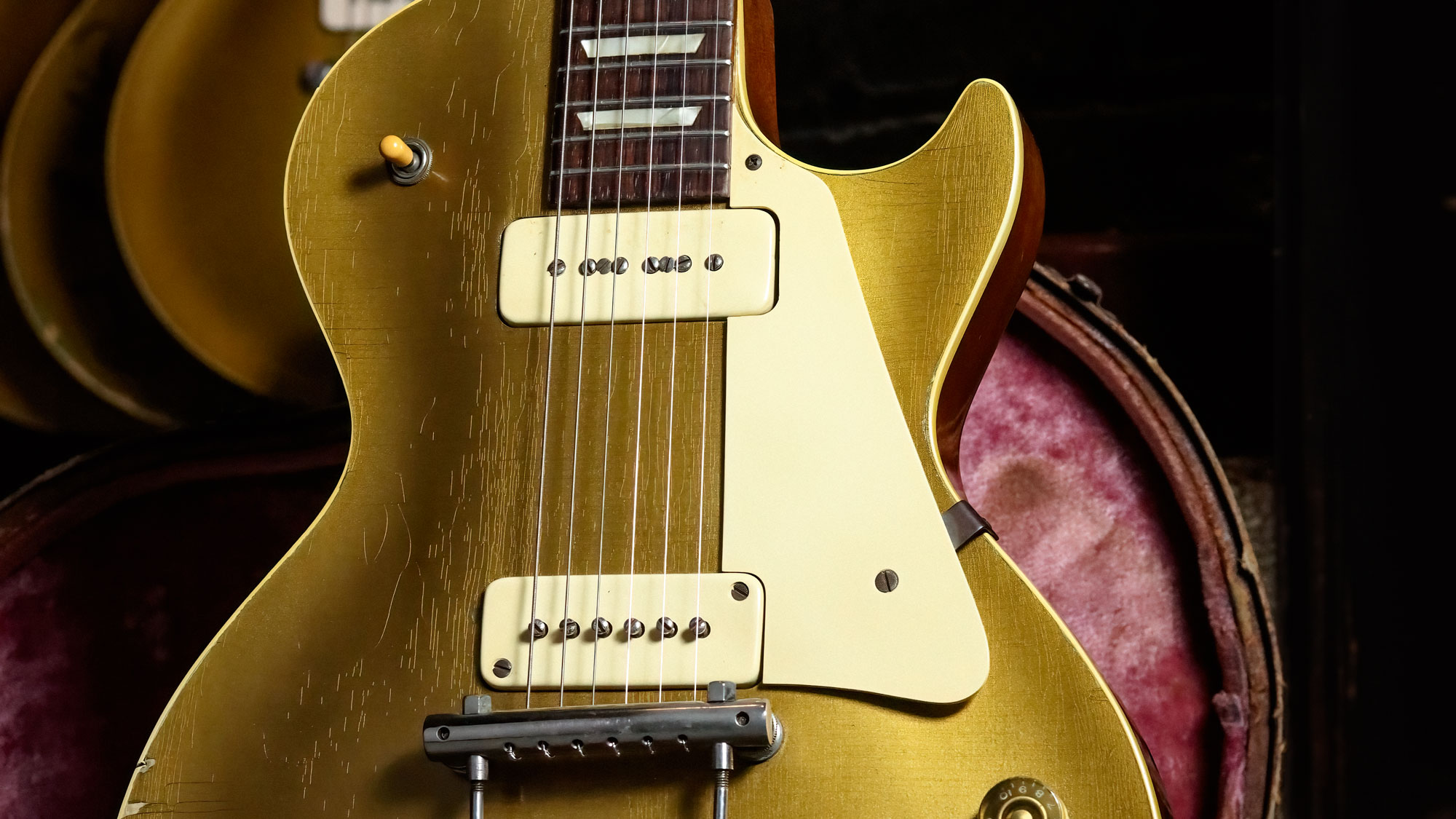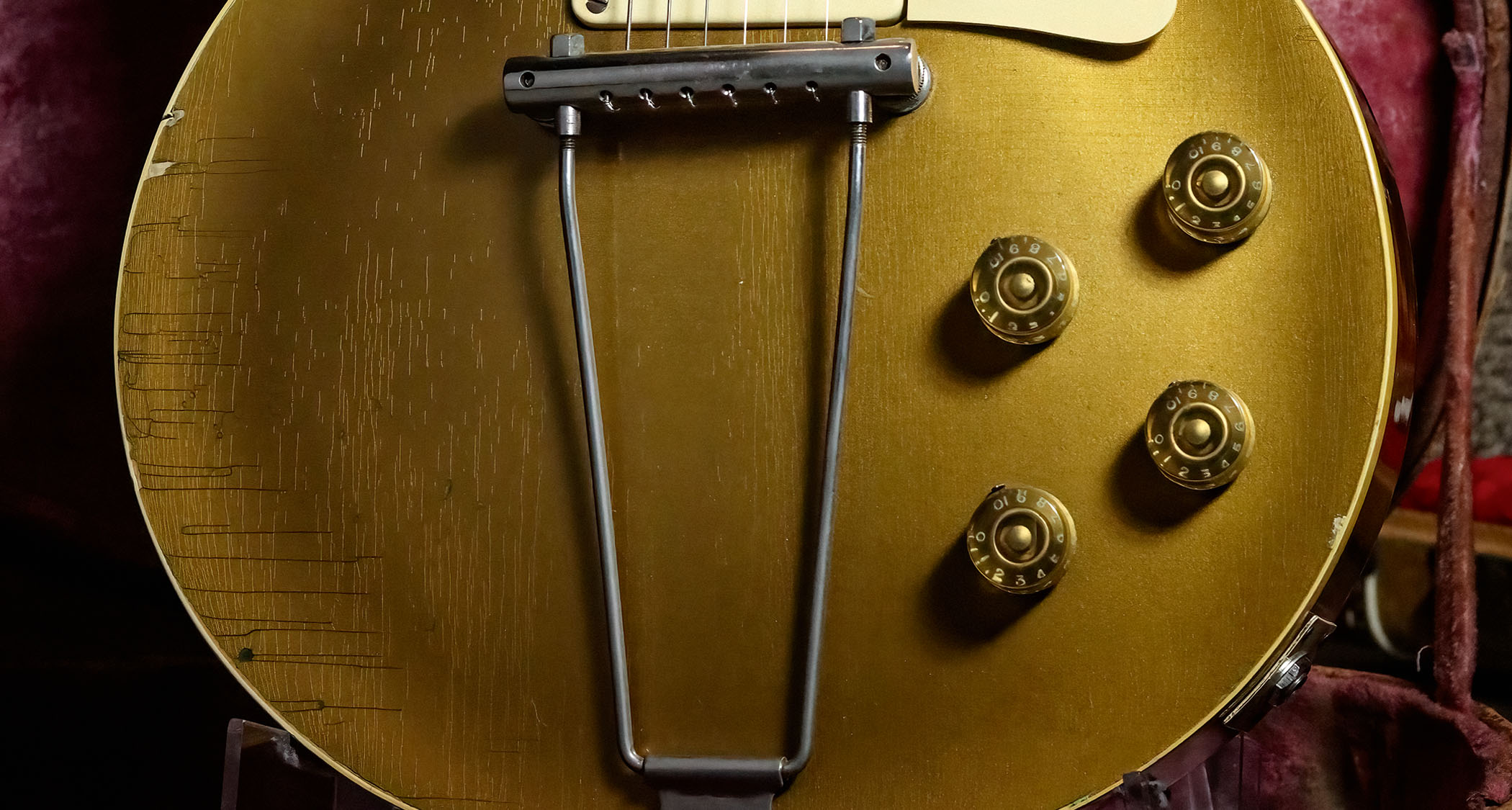“A 1952 Les Paul was not a cool guitar to own – I remember these guitars hanging around and fading in shop windows for months on end”: The story of Gibson’s “cursed” 1952 Les Paul and why it was long overlooked on the vintage market
Vintage guitar expert Dave Davidson gives us a guided tour of a very special ’52 Goldtop with a neck profile that gives it VIP status. The ’52 is one of the first Les Pauls ever made. Why doesn't it get more love?

As one of the very first Les Pauls ever made, this 1952 model has the unbound neck with a slight V profile towards the nut end that feels really nice. It’s like a 1956 wide-neck Strat V that begins to round off by the 5th fret.
A lot of these early Les Pauls sound particularly good, and I wish Gibson had continued with the unbound fretboards. There’s something about the feel of shoulders that are uninterrupted by binding that I really like because it is actually very Fender-like.
It does have some playwear, but this is a completely original guitar with the long barrel ‘tall boy’ knobs and nothing has ever been altered or manipulated. The ‘Patent Pending’ stamp is on the tailpiece hinge, and the original bar bridge is still attached.
I usually fit the MojoAxe conversion bridge to these guitars, but this one plays so well that I left it original. It sounds wonderfully bright, and as you’re playing you can feel the vibrations everywhere. It has so much character, I’m loath to modify it.
There has been a lot of debate about the diagonal screw fitting of the bridge pickup and why Gibson changed to two fixing screws in line with the pole screws. I think they had maybe bought a bunch of these covers with the screw holes and wanted to use them up.
A friend of mine told me the reason they went to the centre screws is that it helped spacer foam under the pickups to expand more evenly and the pickups wouldn’t twist off square when the height was adjusted.
With the earliest ones, the pickguard is almost on top of the body because the bracket has virtually no elevation. Other features include the absence of a switch washer or ‘poker chip’ and no-line Kluson tuners. This one comes with its original four-latch brown case with the pink interior.
All the latest guitar news, interviews, lessons, reviews, deals and more, direct to your inbox!
It’s a funny thing that when I was a young guy, a 1952 Les Paul was not a cool guitar to own, especially when you could get a ’54, ’55 or ’56 instead. The 1952s were considered cursed and they were very inexpensive.
I remember these guitars trading on 48th Street for $600 and hanging around and fading in shop windows for months on end. When I look back now, I wish I’d grabbed every one I could get my hands on.

Les Paul designed the tailpiece and I think Gibson tried to accommodate him by making it work as well as it could. But that meant the strings had to wrap under the bridge, rather than over it, and they really weren’t playable from day one. They were maybe rushed into production because Gibson was terrified by Fender’s sales numbers.
I think the difference is that Fender grew their guitars within the factory and they released them when they were pretty much perfected. In contrast, Gibson often put out new models too early and let them develop in the public’s hands.

For instance, the earliest 1953 wraptail Goldtops had an unsuitable neck angle and many are in perfect condition because they were even less playable than the 1952s. No less than three neck angles were used for Specials and Juniors, and they even got the neck angle wrong on the first ES-335s.
When guys started doing ’Burst conversions, they were buying Goldtops with bound fingerboards. The thing is that most of the bound ones had really big and clubby necks. They’re nothing like the early ones, and although I’ve spoken to people who were close to the scene, nobody has ever been able to explain to me why the decision to alter the neck profile was made.
I don’t know if it was an executive order or maybe something one neck carver did and everybody followed suit. Perhaps it was customer feedback or just the guys in the factory realising that the clubby necks required less work and management allowed them to get away with it.
To make a really nice V neck requires time, and the more finely crafted soft V profile does occasionally show up on later guitars including ’Bursts and Goldtops. I almost feel like when you get one of those, it was probably made for a VIP who requested it.
You can pick up 15 Goldtops from 1956 and one of them might have that perfectly shaped neck. It certainly wasn’t Gibson’s standard profile, and that’s one of the many things that make this Goldtop so special.
- Vintage guitar veteran David Davidson owns Well Strung Guitars in Farmingdale, New York.
- This article first appeared in Guitarist. Subscribe and save.
You must confirm your public display name before commenting
Please logout and then login again, you will then be prompted to enter your display name.

